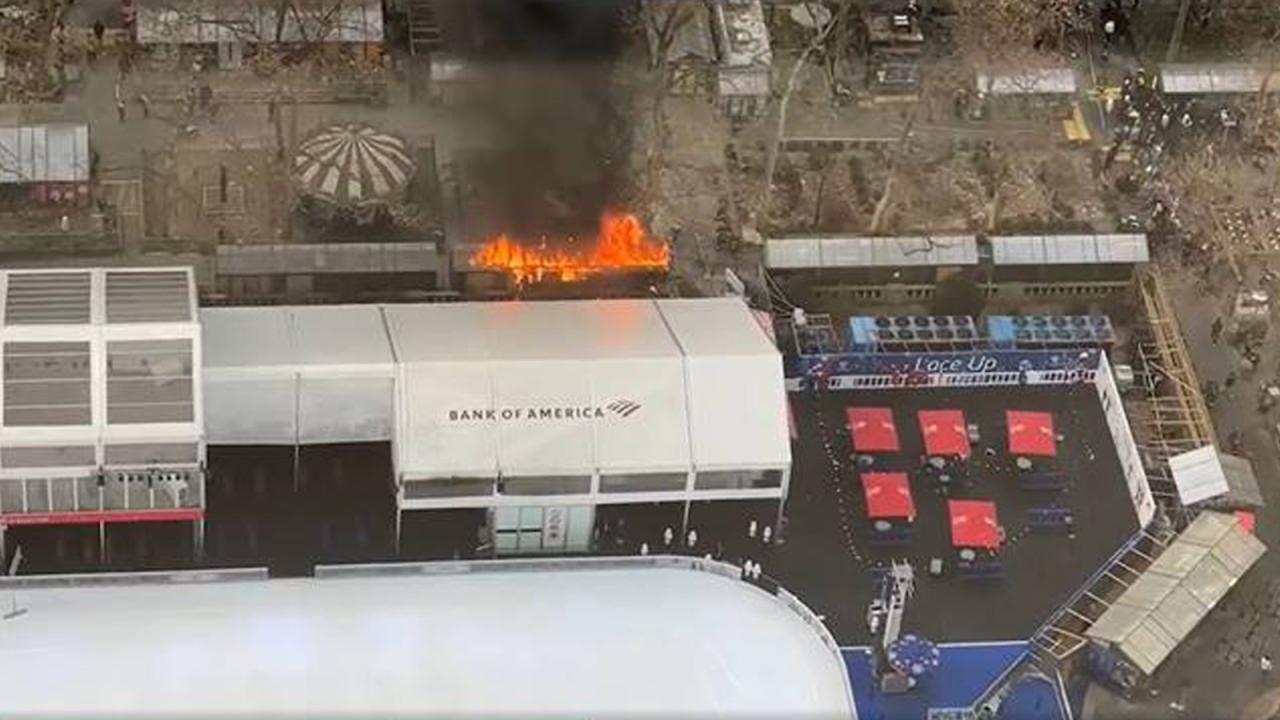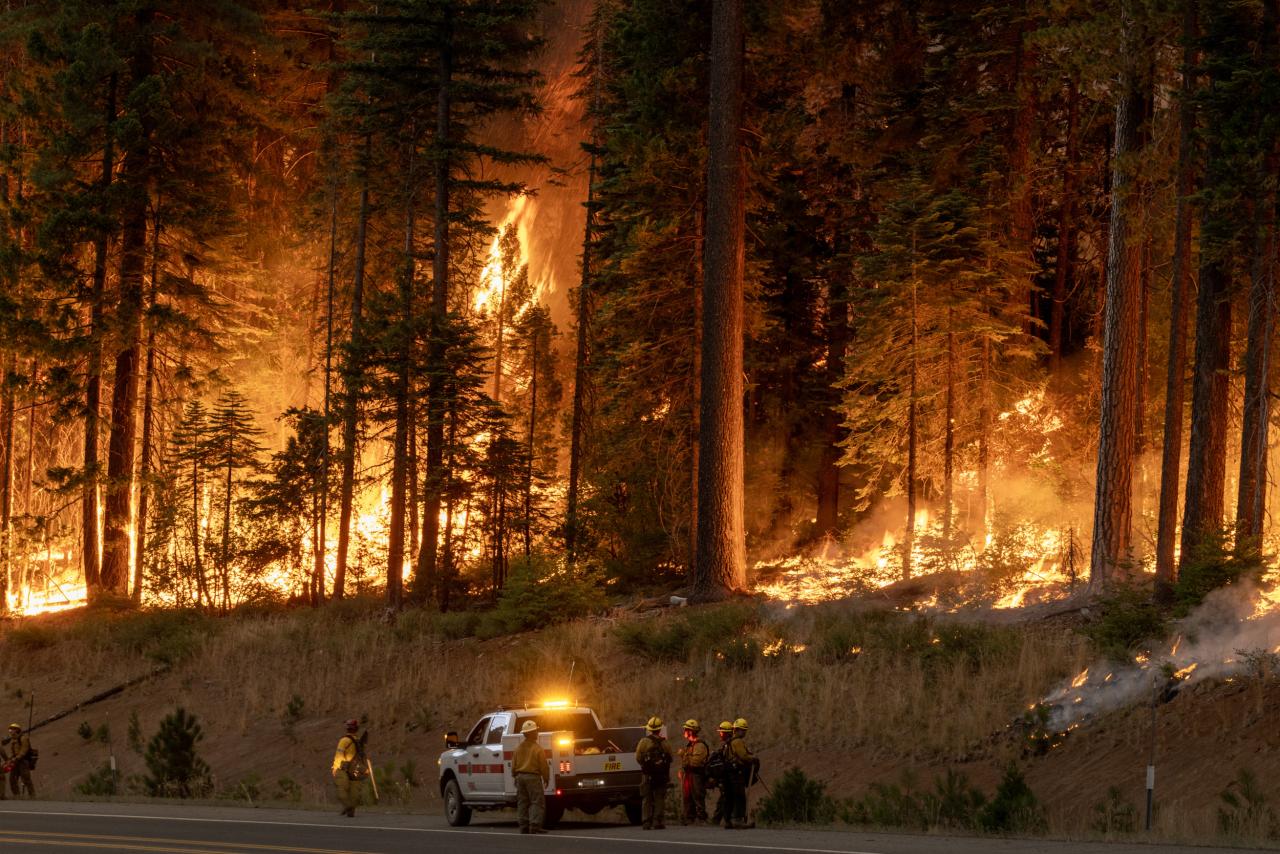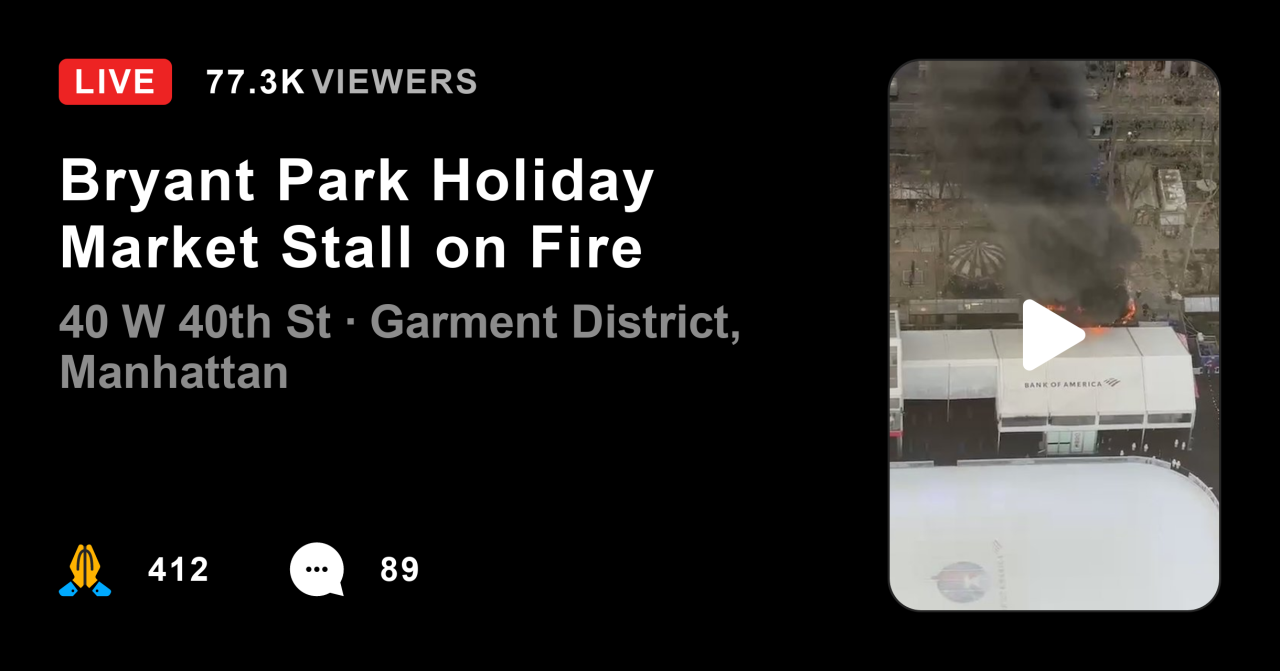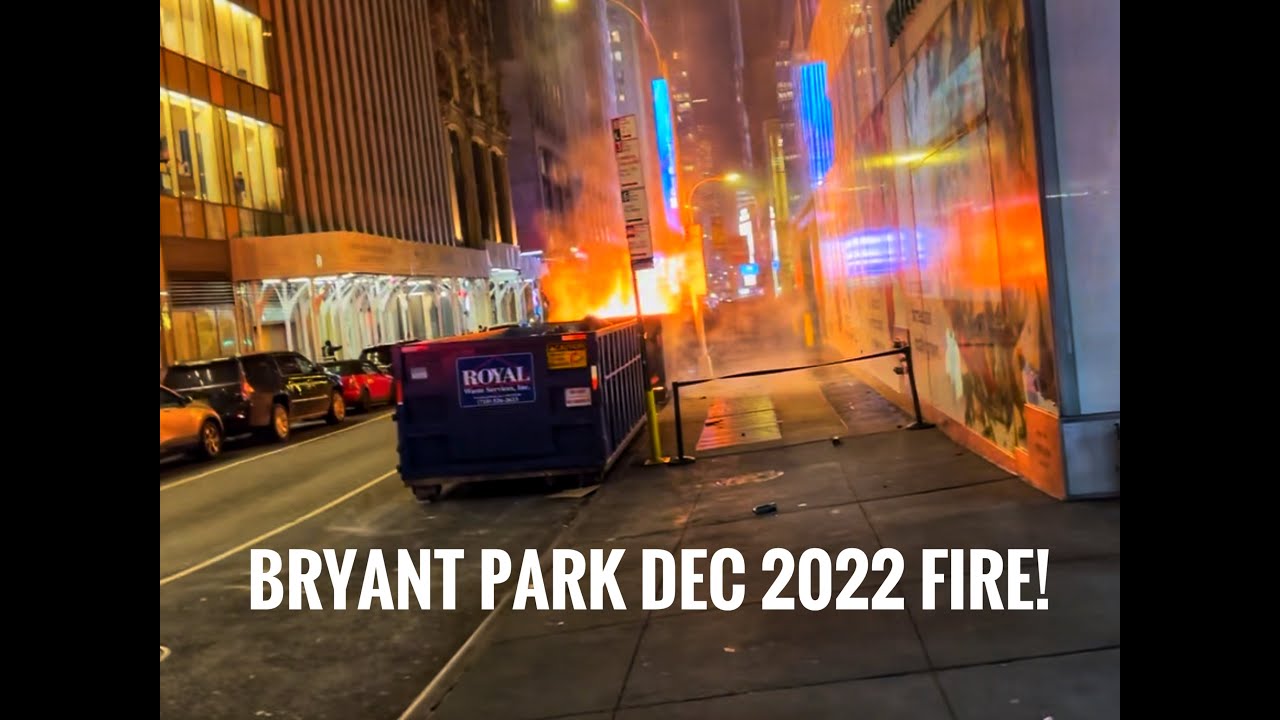The Bryant Park fire, a devastating inferno that engulfed the heart of New York City’s Midtown, left an unforgettable mark on the city’s landscape and the lives of those who witnessed it. From its fiery origins to the remarkable recovery efforts, this gripping account unravels the story behind this tragic event.
On a fateful July afternoon, as the sun beat down relentlessly, a spark ignited within the iconic Bryant Park, sending flames soaring high into the sky. The blaze, fueled by dry vegetation and strong winds, spread with alarming speed, consuming everything in its path.
Background and Overview of the Bryant Park Fire
Bryant Park, located in the heart of Midtown Manhattan, New York City, has a rich history dating back to the mid-19th century. It has been a beloved public space, serving as a popular destination for relaxation, recreation, and cultural events.
On July 18, 1994, at approximately 4:30 AM, a devastating fire broke out in Bryant Park. The fire, fueled by strong winds and dry conditions, quickly spread through the park, causing significant damage.
Extent of Damage
The fire engulfed several structures within the park, including the Bryant Park Grill and the carousel. The iconic Josephine Shaw Lowell Memorial Fountain was also damaged in the blaze. Additionally, the fire destroyed numerous trees and other vegetation, leaving the park’s landscape severely impacted.
Causes and Investigations
The Bryant Park fire’s cause remains under investigation, but eyewitness accounts and official probes provide insights into potential factors.
Eyewitness Accounts
- Witnesses reported seeing smoke and flames emanating from a construction site adjacent to the park.
- Others observed sparks and embers falling from the roof of a nearby building.
Official Investigations
- Fire investigators are examining electrical wiring, construction materials, and potential arson.
- They are using forensic techniques to determine the fire’s origin and spread.
Fire Safety Expert Insights
Fire safety experts emphasize the importance of:
- Proper electrical maintenance
- Fire-resistant construction materials
- Adequate fire suppression systems
- Regular fire safety inspections
Response and Containment
In response to the Bryant Park fire, firefighters and emergency personnel arrived promptly at the scene. Their immediate actions focused on evacuating people from the affected areas and containing the spread of the fire. However, the fire presented several challenges due to its intensity and location within the densely populated area.
Challenges in Containment
One of the primary challenges faced by firefighters was the limited access to water sources. The fire hydrants in the vicinity were inadequate to provide the necessary volume of water to extinguish the blaze effectively. As a result, firefighters had to rely on tanker trucks to transport water to the scene, which slowed down the containment efforts.
Furthermore, the fire’s location within the park posed another obstacle. The dense vegetation and lack of clear pathways made it difficult for firefighters to navigate and reach the source of the fire. The wind also played a significant role in fanning the flames and spreading the fire to different sections of the park.
Coordination between Agencies
To effectively address the challenges and coordinate the response, various agencies worked together seamlessly. The New York City Fire Department (FDNY) took the lead in firefighting operations, while the New York City Police Department (NYPD) assisted with crowd control and traffic management.
Additionally, the Department of Parks and Recreation provided logistical support and ensured the safety of park visitors.
The coordinated efforts of these agencies allowed for a swift and efficient response, minimizing the damage and preventing any casualties. The collaboration between different departments demonstrated the importance of interagency cooperation in managing emergency situations.
Impact and Aftermath: Bryant Park Fire
The Bryant Park fire had a significant impact on the surrounding community and businesses. The fire caused extensive damage to the park’s infrastructure, including the iconic carousel, the Loeb Boathouse, and the Bryant Park Grill. The fire also forced the evacuation of several nearby buildings, including the New York Public Library and the Bank of America Tower.
In the aftermath of the fire, the city of New York launched a major effort to restore and rebuild the park. The carousel was repaired and reopened in 2002, and the Loeb Boathouse was rebuilt and reopened in 2004. The Bryant Park Grill was also rebuilt and reopened in 2004.
The fire had a lasting impact on the community. Many people who lived or worked near the park were traumatized by the fire. The fire also caused a decline in tourism to the area. However, the community has shown great resilience in the face of adversity.
The park has been rebuilt and is once again a vibrant and popular destination.
Stories of Resilience and Recovery
The Bryant Park fire was a tragedy, but it also brought out the best in the community. Many people stepped forward to help in the aftermath of the fire. Volunteers helped to clean up the park, and businesses donated money and supplies to help the victims of the fire.
One of the most inspiring stories of resilience came from a young boy named Anthony Rodriguez. Anthony was just 10 years old when the fire happened. He lived in a building that was evacuated during the fire, and he lost all of his belongings.
However, Anthony did not let the fire defeat him. He went to school the next day, and he helped to clean up the park. Anthony’s story is a reminder that even in the darkest of times, there is always hope.
Lessons Learned and Prevention
The Bryant Park fire highlighted the need for robust fire safety measures, public awareness, and leveraging technology to prevent similar incidents in the future.
Fire Safety Measures
- Regular fire safety inspections and maintenance of electrical systems, cooking equipment, and other potential hazards.
- Installation of smoke and carbon monoxide detectors in all buildings, with regular testing and maintenance.
- Development and implementation of comprehensive fire safety plans that Artikel evacuation procedures and emergency response protocols.
Public Awareness, Bryant park fire
Public education campaigns are crucial to raise awareness about fire hazards and promote responsible behavior:
- Teaching the importance of fire prevention and safe practices in schools, community centers, and workplaces.
- Educating the public on the proper use and disposal of flammable materials and electrical appliances.
- Encouraging the reporting of suspicious activities or potential fire hazards to authorities.
Technology and Innovation
Advancements in technology can significantly enhance fire prevention and response:
- Early detection systems using sensors and artificial intelligence to identify potential fire hazards and trigger alarms.
- Automated sprinkler systems and fire suppression technologies to quickly contain and extinguish fires.
- Improved communication and coordination systems for firefighters and emergency responders to facilitate a swift and effective response.
Final Conclusion
The Bryant Park fire stands as a stark reminder of the fragility of our urban spaces and the importance of fire safety. As the park continues to thrive, serving as a vibrant gathering place for New Yorkers and visitors alike, it bears witness to the resilience and determination of a community that refused to be defeated.
FAQs
What caused the Bryant Park fire?
The exact cause of the fire remains undetermined, but investigators believe it may have been sparked by discarded smoking materials or an electrical malfunction.
How extensive was the damage caused by the fire?
The fire destroyed over 10 acres of parkland, including trees, shrubs, and the historic Bryant Park Carousel.
How did the community respond to the fire?
The community rallied together in the aftermath of the fire, volunteering their time and resources to help with cleanup and recovery efforts.




